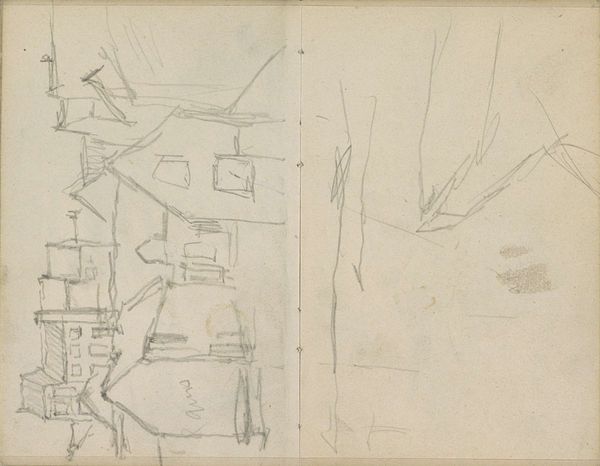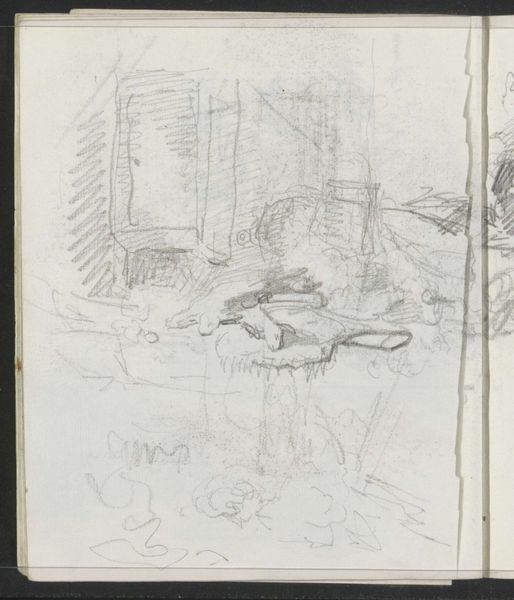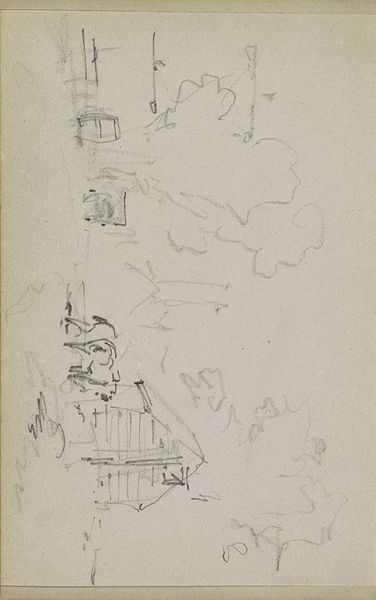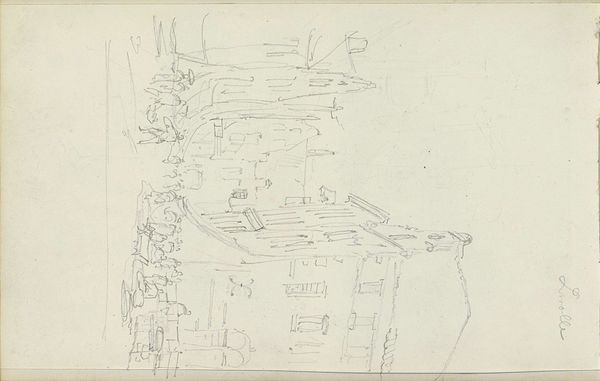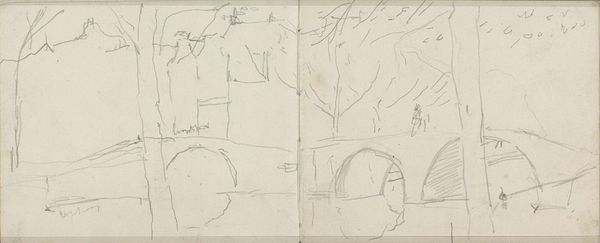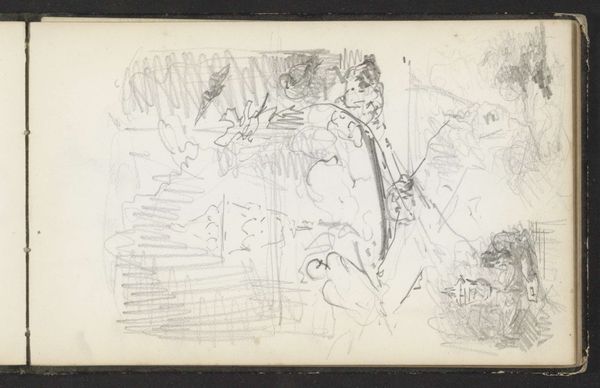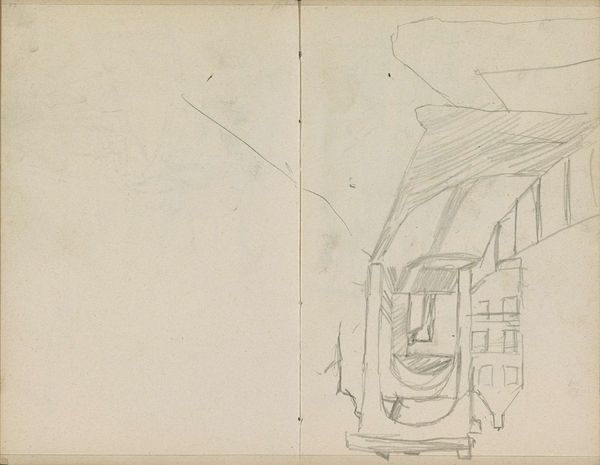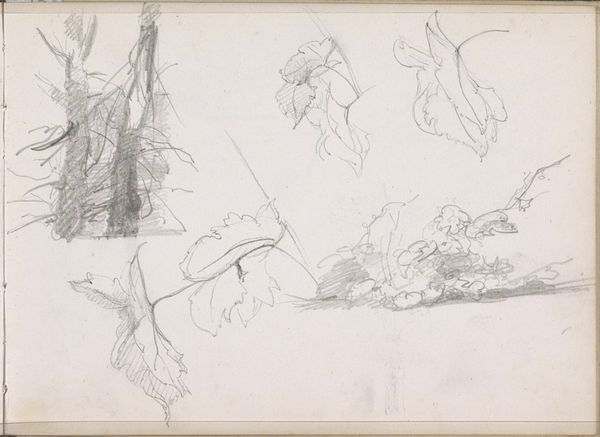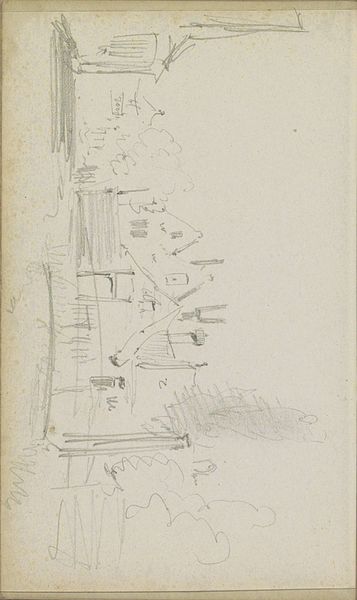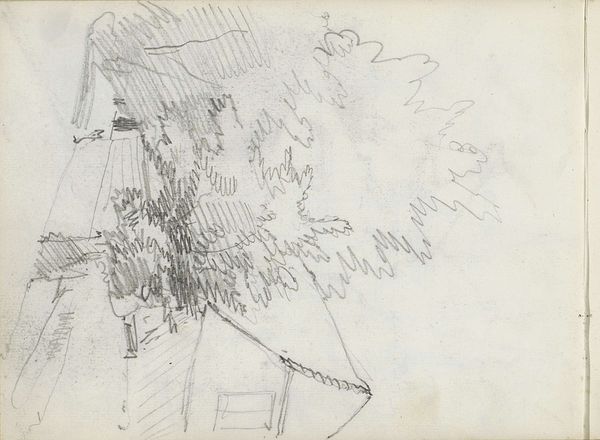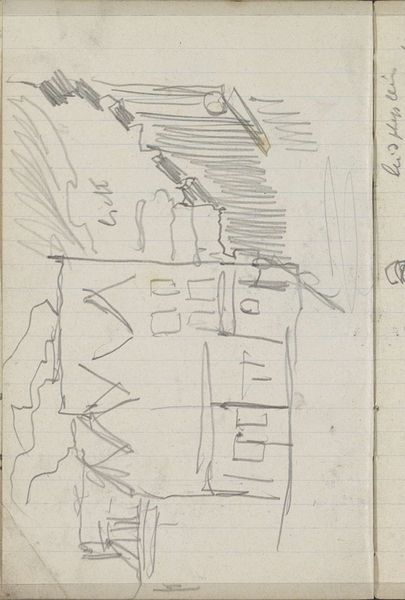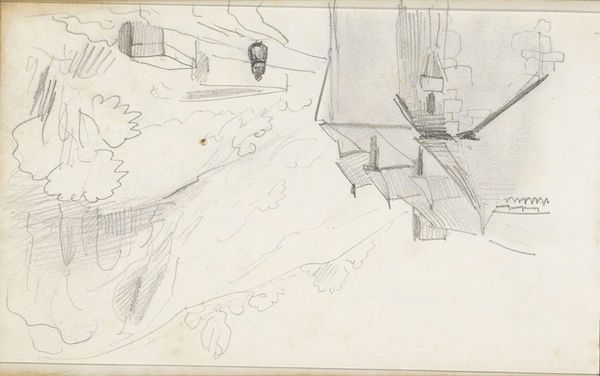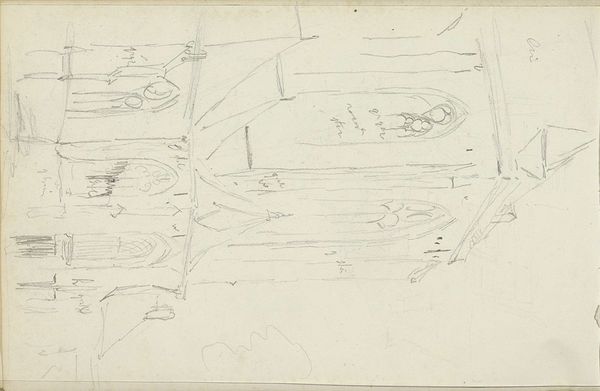
drawing, paper, pencil
#
drawing
#
dutch-golden-age
#
landscape
#
paper
#
geometric
#
pencil
#
realism
Copyright: Rijks Museum: Open Domain
Curator: So, this is Willem Koekkoek's "Bladeren van een roos en klimop," made between 1849 and 1895. It's a pencil drawing on paper, and I'm immediately drawn to the delicate linework contrasting with the architectural sketch. What are your initial thoughts? Editor: I find it intriguing how the artist combines these studies – almost like two separate drawings on the same page. The botanical sketches are so detailed, almost scientific, while the building feels more gestural. How do you interpret this juxtaposition? Curator: For me, it's about understanding the labour and material realities of art production at that time. The detailed study of leaves, meticulously rendered with pencil, speaks to a specific kind of skill and the value placed on observation. What do you think is the significance of depicting leaves of roses and ivy versus other materials? Editor: Well, roses could signify beauty and perhaps wealth given their cultivation, and ivy may symbolize tenacity and growth… maybe the artist is exploring these ideas in relation to the depiction of the buildings? Curator: Precisely. The drawing’s social context would’ve been the increasing urbanization in the Netherlands, wouldn’t it? This would contrast with the appreciation of landscape tradition; hence, you may infer this piece may try to depict the conflict between nature and urbanity. Can you also observe this within the materials the drawing is created from? Editor: Yes, the drawing as an object: the pencil itself, the paper. Paper was becoming more accessible during this period, signifying an industrial impact on artistic practice, am I right? Curator: Exactly. This availability enabled a democratization of art-making, although access to formal training remained stratified. What you may take for granted is the materiality of pencils and paper used for a lot of sketches then: today it can even be produced on tablets! Editor: That's a perspective I hadn't fully considered before. So, beyond its aesthetic qualities, this drawing offers insights into the socio-economic landscape of artistic production at the time. Curator: Precisely. By analyzing the materials, the artist's technique, and the societal context, we can uncover layers of meaning beyond just the visual representation. I have to agree it offers fascinating glimpses into artistic and social frameworks.
Comments
No comments
Be the first to comment and join the conversation on the ultimate creative platform.
